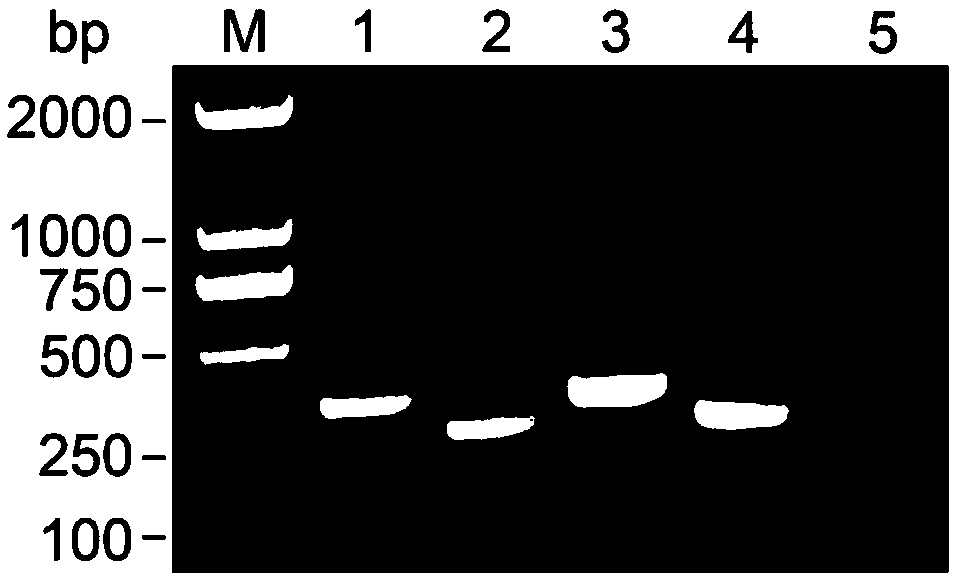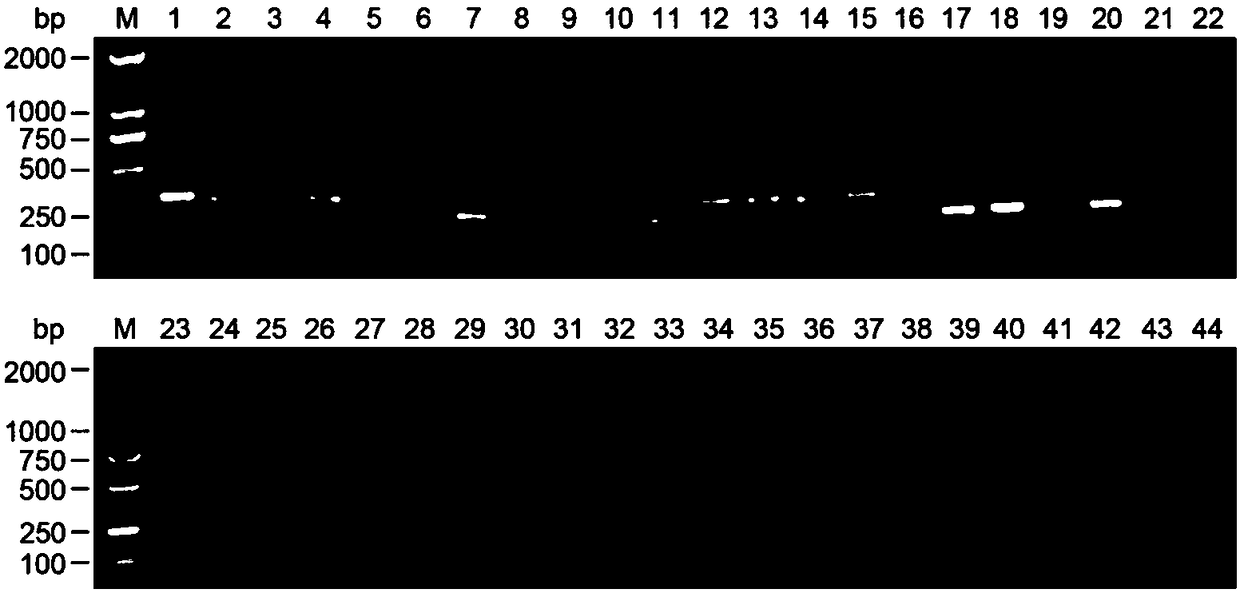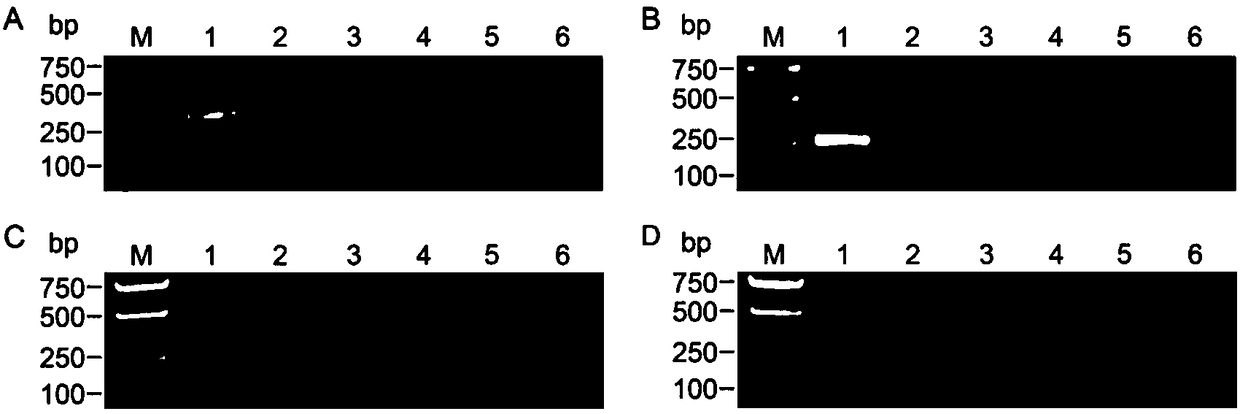RPA primer, kit and detection method for detecting four common root-knot nematodes
A root-knot nematode and detection method technology, applied in biochemical equipment and methods, DNA/RNA fragments, recombinant DNA technology, etc., can solve problems such as root-knot nematode detection that has not yet been seen, and achieve low requirements for equipment and high detection The effect of high sensitivity and detection efficiency
- Summary
- Abstract
- Description
- Claims
- Application Information
AI Technical Summary
Problems solved by technology
Method used
Image
Examples
Embodiment 1
[0042] Design and screening of four common root-knot nematode RPA primers
[0043] Taking four reported common root-knot nematode SCAR sequences as target genes, and according to the RPA primer design principles, RPA primers that can be used in the RPA kit (TwistAmp Basic) were designed. Four common root-knot nematode DNAs were used for the screening of RPA primers, and four sets of RPA primer pairs with high amplification efficiency, sensitivity and specificity were obtained. Their sequences are as follows:
[0044] RPA primer pairs for detection of M. incognita:
[0045] Upstream primer Mi-RPA-F (SEQ ID No.1): 5'-GTATCATTATGAAGCTAAGACTTTGGGCTACAA-3';
[0046] Downstream primer Mi-RPA-R (SEQ ID No.2): 5'-TCATCACAACAACCAATACAAACATCCCGCTA-3';
[0047] RPA primer pairs for detection of M. javanica:
[0048] Upstream primer Mj-RPA-F (SEQ ID No.3): 5'-GTGCGCGATTGAACTGAGCCCAGACTGAAACGA-3';
[0049] Downstream primer Mj-RPA-R (SEQ ID No.4): 5'-TATTTTTCAATTGGCCTCCTTGAGTGGGCTTAT-3';...
Embodiment 2
[0057] Establishment of four detection methods for common root-knot nematode RPA
[0058] The detection method for detecting four kinds of common root-knot nematodes of the present embodiment comprises the following steps:
[0059] (1) DNA extraction from the sample: pick a single root-knot nematode 2nd instar larvae, place it in a 200 μL PCR tube containing 20 μL lysis buffer, then freeze in liquid nitrogen for 1 min, and then repeat 3 times in a water bath at 95 °C for 2 min, and finally Incubate at 65°C for 1.5h, process at 95°C for 10min, centrifuge at 14000rpm for 1min, take the supernatant and store it at -20°C for later use; Peanut root-knot nematode and elephant ear root-knot nematode;
[0060] (2) using the DNA extracted in step (1) as the DNA template to be detected, adopt the RPA primer described in Example 1, and carry out the RPA amplification reaction in the RPA reaction tube;
[0061] The reaction conditions of the RPA amplification reaction in step (2) are: r...
Embodiment 3
[0068] Specific detection of four common root-knot nematode RPA primers
[0069] The detection method that is used to detect four kinds of common root-knot nematodes of the present embodiment is the same as embodiment 2, the difference is:
[0070] The samples are root-knot nematode incognita, root-knot nematode java, root-knot nematode peanut, root-knot nematode elephant ear, root-knot nematode northern, Ditynematode rot and soybean cyst nematode respectively.
[0071] Such as figure 2 as shown, figure 2 The labels "1", "2", "3", "4", "5", and "6" refer to the detection results of 6 groups of M. incognita. figure 2 The labels "7", "8", "9", "10", and "11" refer to the detection results of 5 populations of root-knot nematode javanica, figure 2 The labels "12", "13", "14", "15", and "16" refer to the detection results of 5 populations of peanut root-knot nematode, figure 2 The labels "17", "18", "19" and "20" in the table refer to the detection results of 4 populations...
PUM
 Login to View More
Login to View More Abstract
Description
Claims
Application Information
 Login to View More
Login to View More - R&D
- Intellectual Property
- Life Sciences
- Materials
- Tech Scout
- Unparalleled Data Quality
- Higher Quality Content
- 60% Fewer Hallucinations
Browse by: Latest US Patents, China's latest patents, Technical Efficacy Thesaurus, Application Domain, Technology Topic, Popular Technical Reports.
© 2025 PatSnap. All rights reserved.Legal|Privacy policy|Modern Slavery Act Transparency Statement|Sitemap|About US| Contact US: help@patsnap.com



